It’s mid-December, which means that it’s finally time to recap the year in coral reefs. 2018 brought with it an embarrassment of riches when it came to juicy reef discoveries. There were plenty of strange corals sighted, along with an overwhelming variety of newly described fishes, but I’ll be featuring those in separate posts. Today, we’ll focus instead on some of the more interesting aberrations, hybrids, and rarely seen species that showed up over the past twelve months. It was painful whittling this list down to just ten. 2018 was jammed full of newsworthy finds, and so I’ll also be linking to some honorable mentions that just missed the cut.
#10: The Inferno Wrasse
The Cirrhilabrus fairy wrasses hold a special place in my heart, and so we’ll get to see this genus pop up a few times throughout our list. While 2018 was a bit of a quiet year when it came to new species being described (just one), it more than made up for this with the many sightings of rarely seen species. And there was also the gorgeous color variant seen here, dubbed the Inferno Wrasse. We’ve gotten used to expecting strange color aberrations in coral reef fishes, but the phenomenon is actually rather uncommon among the fairy wrasses. The ornate patterning of this group is heavily driven by sexual selection, and this may put a fundamental strain on the sorts of phenotypic innovation possible. Stray too far from the visual mold, and an aberrant individual might fail to compete for mates. This makes the Inferno Wrasse that much more special.
The same can be said for the “bald” clownfish featured in May. Ocellaris variants have become a bit passe, but there is clearly still some novelty to be had in this genus. The anterior stripe of Amphiprion is genetically dominant. It develops first in juveniles and it’s the last to disappear in the Tomato Clowns, so it’s hard to explain how this weirdo managed to lose this stripe while keeping the others. Well played, sir.
#9: A Mystery Malagasy Damselfish
It was just last week that I broke news of a brand spanking new damselfish which has been hauled up from Madagascar. What this fish might lack in color it more than makes up for with its bold patterning. There’s really nothing quite like it anywhere else in the damselfish family, though the current consensus is recognizing this as a Chrysiptera. Fortunately, Barnett Shutman of Blue Ocean SARL has sent these valuable specimens off to be studied and described, so expect 2019 to reveal the true identity of this mystery fish.
#8: The Hypermelanistic Achilles Tang
Black certainly seemed to be in this year, as evidenced by this sleek Achilles variant procured by Elliot Lim of Marine Collectors. The orange markings of this species are naturally a bit variable—some have a large teardrop around the caudal spine, while in others it can be quite small—but never have we seen one completely lacking this characteristic marking. Even the tail is black. Very chic. Another melanistic (well, hypoerythristic might be more accurate?) highlight for the year was the Midnight Coral Beauty, a fish trying its hardest to be Centropyge deborae.
#7: The Longfin Bluespicuous Angelfish
Rare hybrids were everywhere in 2018. Dynasty Marine showcased a crazy mix of the Atlantic Blue Tang (A. coeruleus) and the Ocean Surgeonfish (A. tractus), just the third example ever found. These are two species separated by roughly 20 million years of evolution. Equally rare, and considerably more desirable, was the Conspicifer Angelfish hybrid we saw from TSM Corals, which combines two already rare and expensive Chaetodontoplus into the sort of unholy amalgamation that only the most well-heeled of aquarist can ever hope for. But even rarer than this was the incredible Frankenfish conjured into being by the aquacultural wizards at Poma Labs… the Longfin Bluespicuous Angelfish. One part Bluelined Angelfish, one part Conspic Angelfish, 100% awesome. This marks the first time that a marine angelfish has even been seen with a longfin mutation, and it exemplifies the potential of captive breeding to produce entirely new phenotypes and hybrids. It’ll be interesting to see what they cook up next.
#6: The Eclipse Flame Angelfish
What a year it was for abnormal dwarf angelfishes! There was that weird faux-zosteri variation of C. vrolikii (or at least that’s the best guess I could come up with). And let’s not forget the swank Koi Angelfish from ACI Aquaculture. But Centropyge Of The Year has to go to the one and only Eclipse Flame Angelfish, shared back in July by Colin at Zoa Collector. There are plenty of variations to be found in this malleable species, but nothing like this black blotched beauty has ever been spotted before.
#5: Deep Sea Treasures
Aquarium collectors are managing to bring up a greater diversity of mesophotic and rariphotic marine life than ever before. The demure Selenanthias is one such example. This humble little anthiadine is normally only seen from ROV submersibles, but one found its way to RVS Fishworld. Not one to rest on their deep sea laurels, RVS also shared a peculiar hogfish that has seemingly never been collected before, Bodianus thoracotaeniatus. But even more thrilling was when we got our first proper look at the enigmatic Red-band Wrasse, a presently undescribed species from the Caribbean that is likely the deepest dwelling member of the diverse wrasse family. Rumor has it that this one won’t be unnamed for much longer…
#4: Cirrhilabrus sanguineus?!
Over the years, we’ve seen the list of unobtainable fairy wrasses slowly shrink, but one has remained constant, Cirrhilabrus sanguineus, the Blood-stained Fairy Wrasse. Specimens were first collected more than a decade ago, but the species has lately completely disappeared from the aquarium trade. Until now, our only photos of this fish in life were courtesy of wrasse guru Hiroyuki Tanaka, who had the good fortune of keeping this species back when it was available. It belongs to the same group as Japan’s C. lanceolatus and Hawaii’s C. jordani, and, like those species, it only occurs at considerable depths. To find it in the wild, one has to travel to the Mascarene Islands of Reunion and Mauritius, which is precisely what the talented fish collector Tim Bennett did this year. Along with other rarities from this region, like Debelius’ Angelfish, we were at long last given a fresh look at this remarkable wrasse, including the first ever images documenting the female of this species. For even more on this, check out Lemon’s excellent rediscription from the journal Zootaxa.
#3: The Nicest White Tang Ever
Aberrant acanthurids are a dime a dozen these days. If I wanted to, I could post about a new koi Scopas Tang or mottled Bristletooth Tang or white Yellow Tang just about every day. It takes something truly special to rouse my interest, but the stunning yellow-rimmed variant of Acanthurus flavescens that showed up back in March belongs to a class all its own. While some might prefer the pristine perfection of a true “white tang”, the symmetry of this specimen is something that we many never see the likes of again. 10/10
#2: First. Ever. Randall’s Perchlet.
Actually, there was an even better rariphotic fish find in 2018, Plectranthias randalli. Collected from Taiwan at 200+ meters, Randall’s Perchlet is the sort of species one never expects to see in the aquarium trade. It’s striking orange and white patterning is iconic and arguably the finest amongst the many dozens of Plectranthias species out there. Seeing this specimen thriving in captivity is a testament to the hard work of its collector, Yan Jiaxian, who has successfully developed techniques allowing for the safe depressurization of deepwater fishes. Who knows what he might find in the new year.
#1: Cirrhilabrus randalli, are you kidding me?
If you aren’t well-versed in fairy wrasses, it might not be apparent what the big deal is with Cirrhilabrus randalli. It’s visually pretty similar to others in the genus, like C. luteovittatus from Micronesia or C. cyanopleura from the Coral Triangle, but, despite being a fairly shallow species, Randall’s Fairy Wrasse is something that has NEVER been seen in captivity. The reason is simple—it only occurs in the protected oceanic reefs off the coast of Northwestern Australia. Without any aquarium collecting allowed at these isolated reefs, there was never any hope of seeing this species collected… that is, until this spectacular terminal male was found in the Timor Sea by Cairns Marine.
On an expedition to the type locality of another recent find in this region—the Monsoon Fairy Wrasse (C. hygroxerus)—divers stumbled upon a few specimens of this mythic Cirrhilabrus. Question is, are these indicative of a permanent population in the Timor Sea, or were they simply waifs? If the former holds true, then there is hope that we might someday see another legendary endemic from these same Aussie reefs, the Mutant Wrasse (“Conniella” apterygia). But to get to this freaky finless beast, divers are going to need to strap on their rebreathers and venture deeper still.

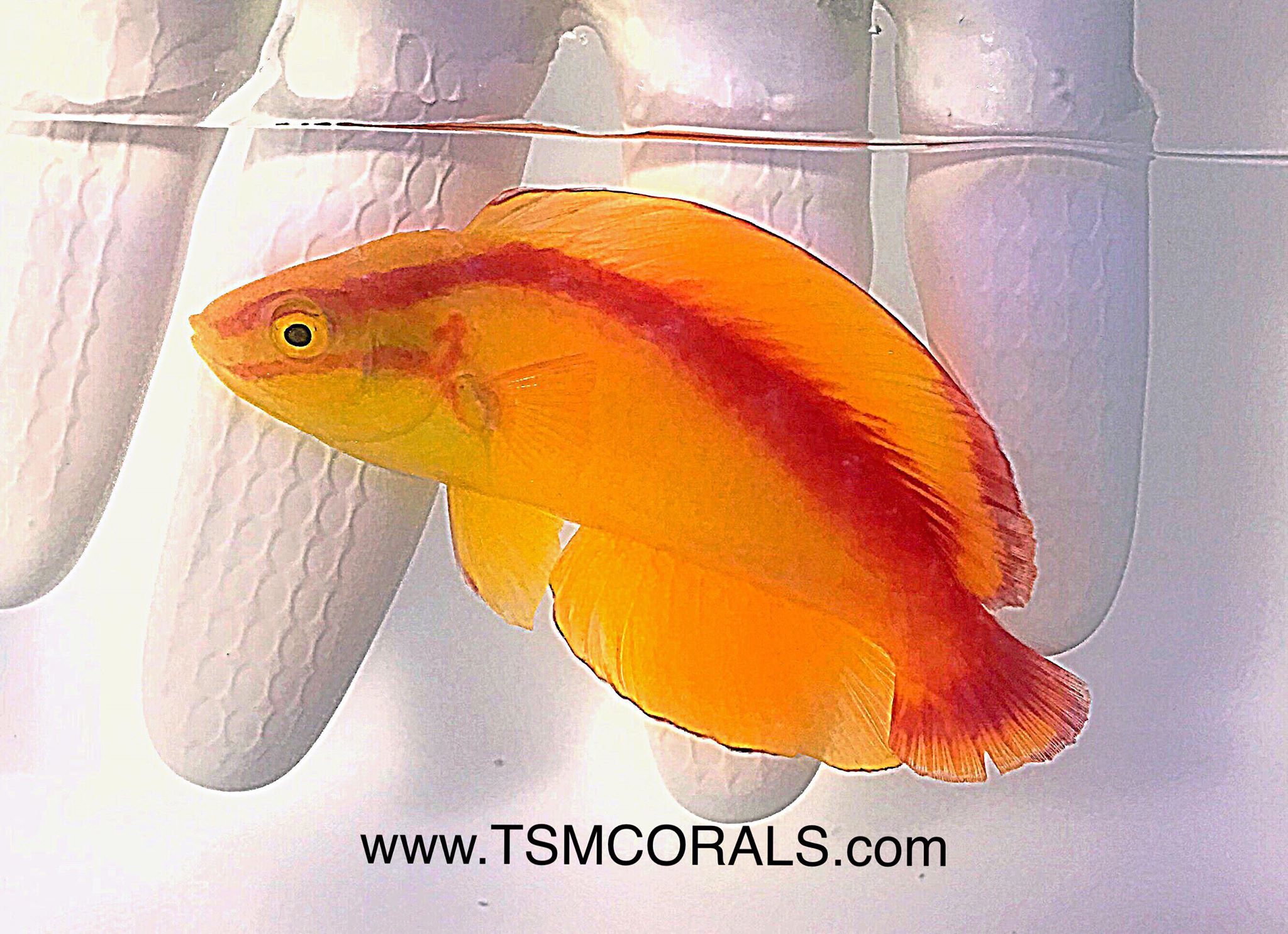
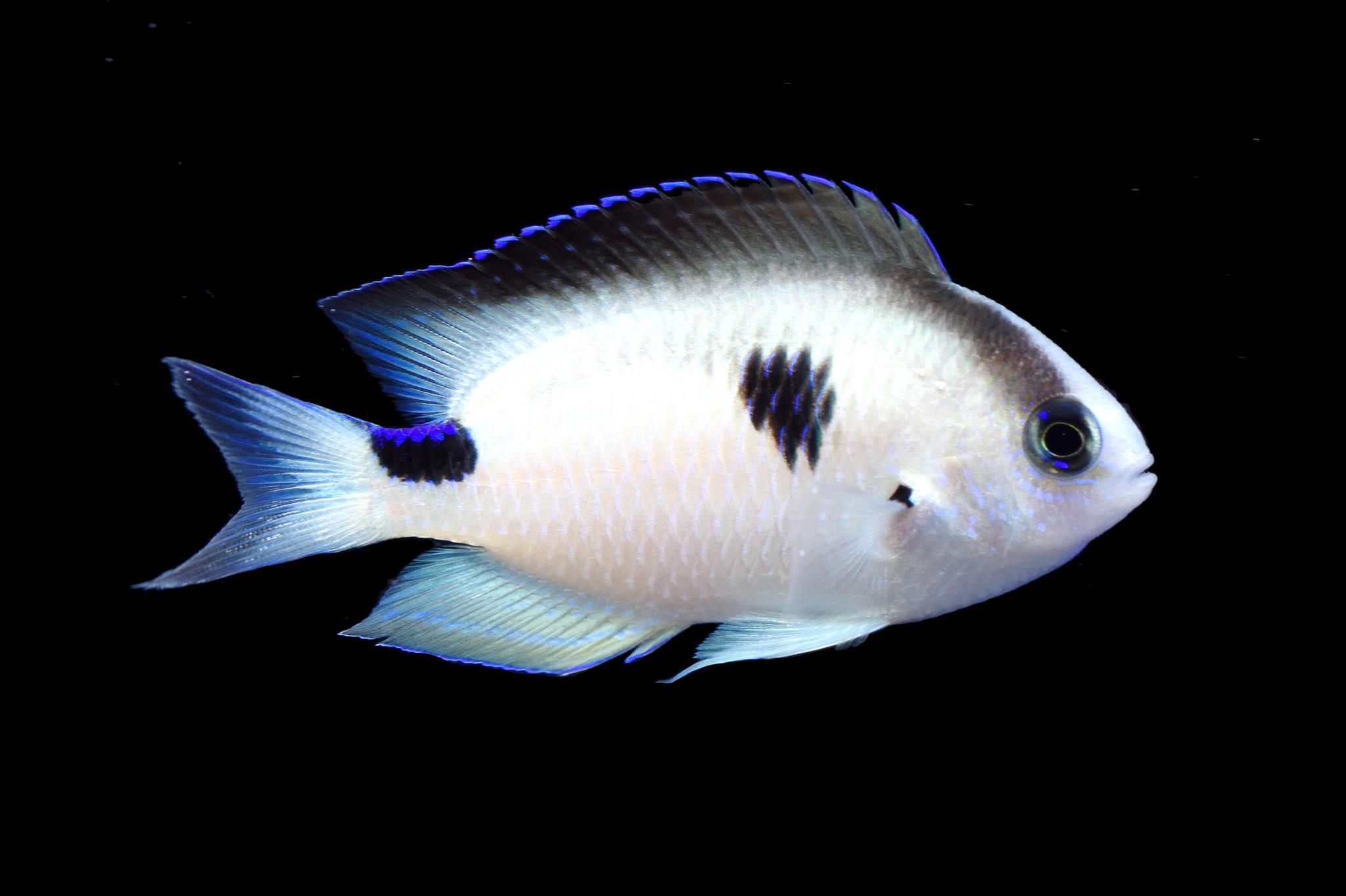
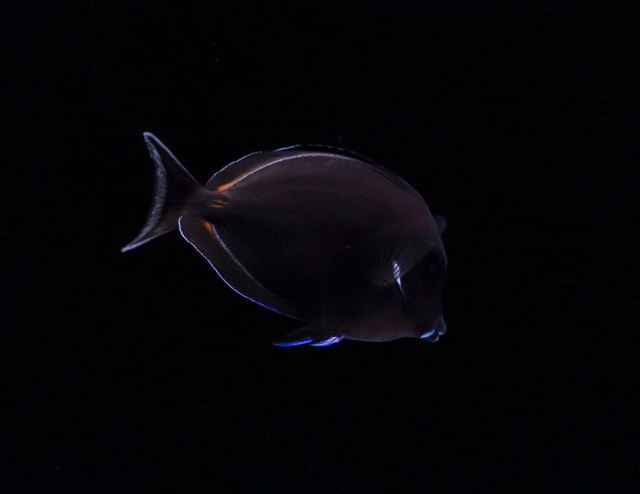
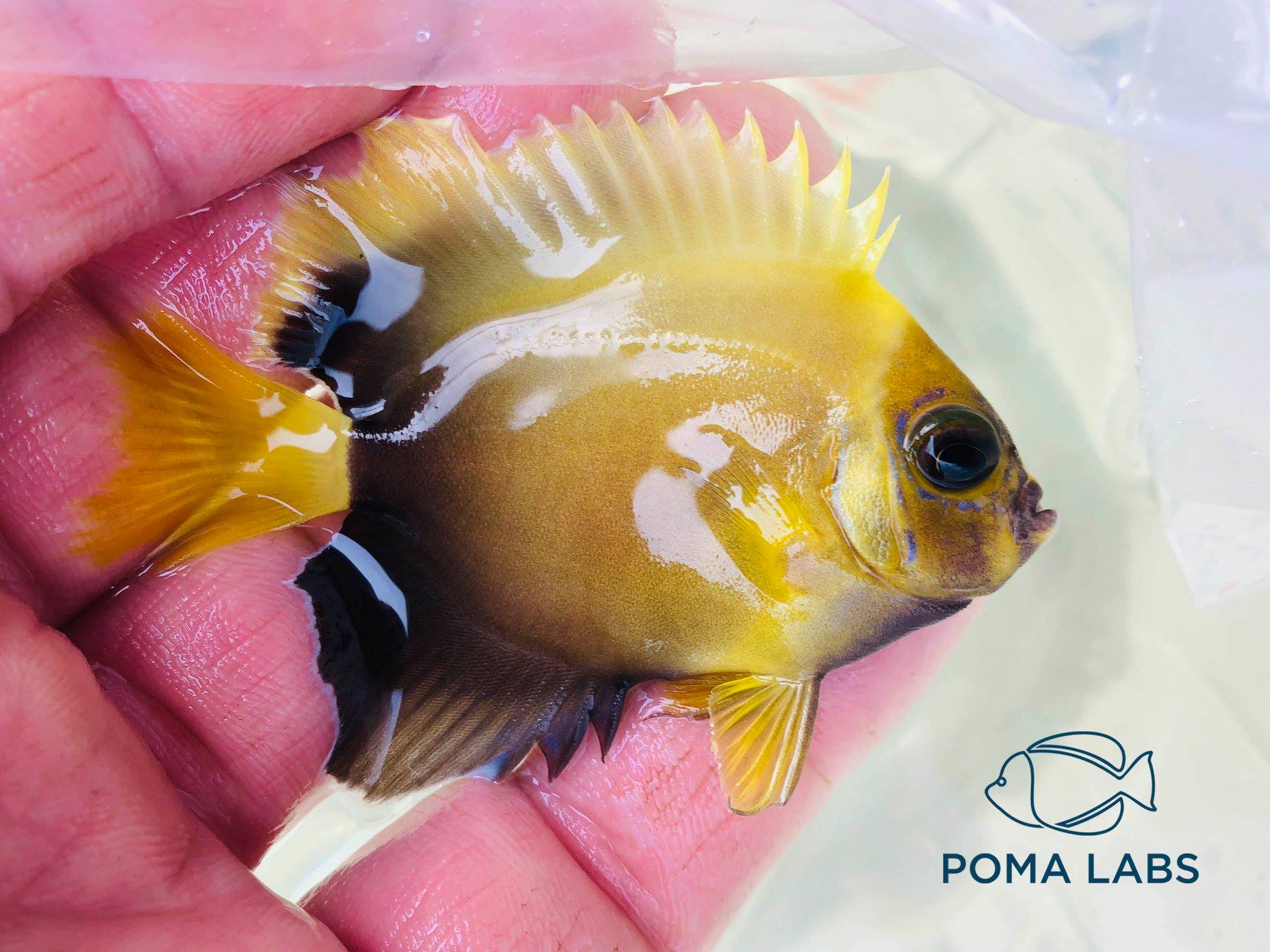
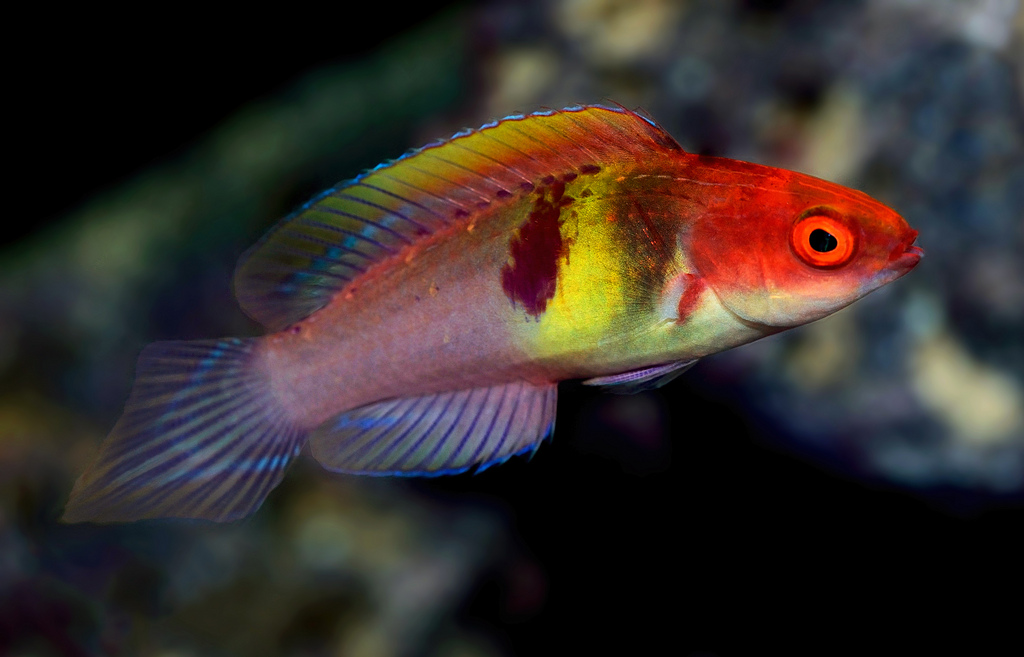

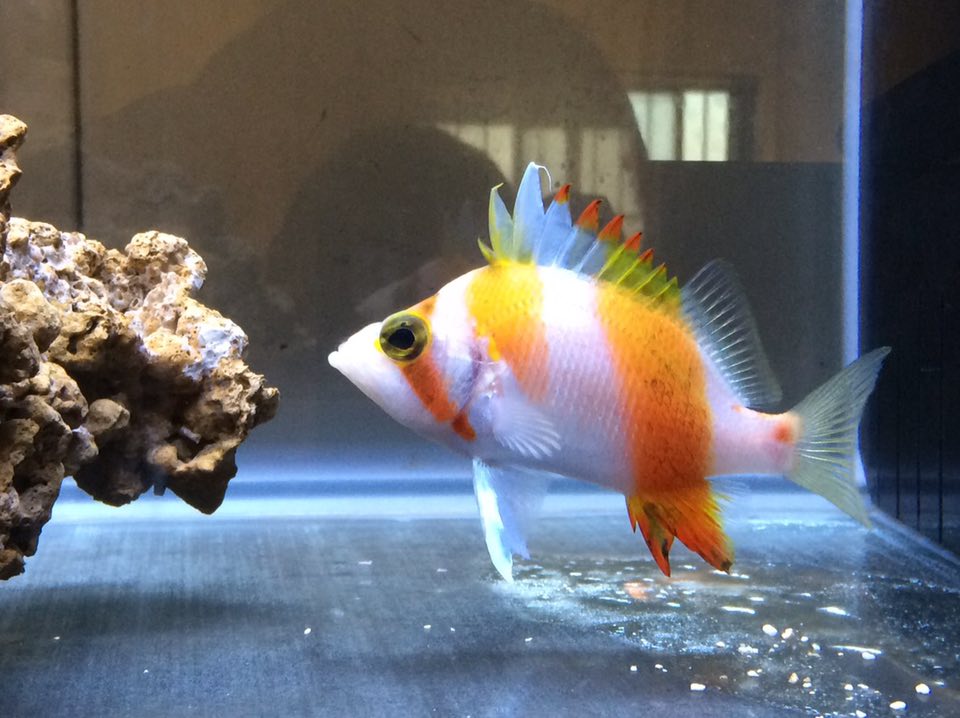
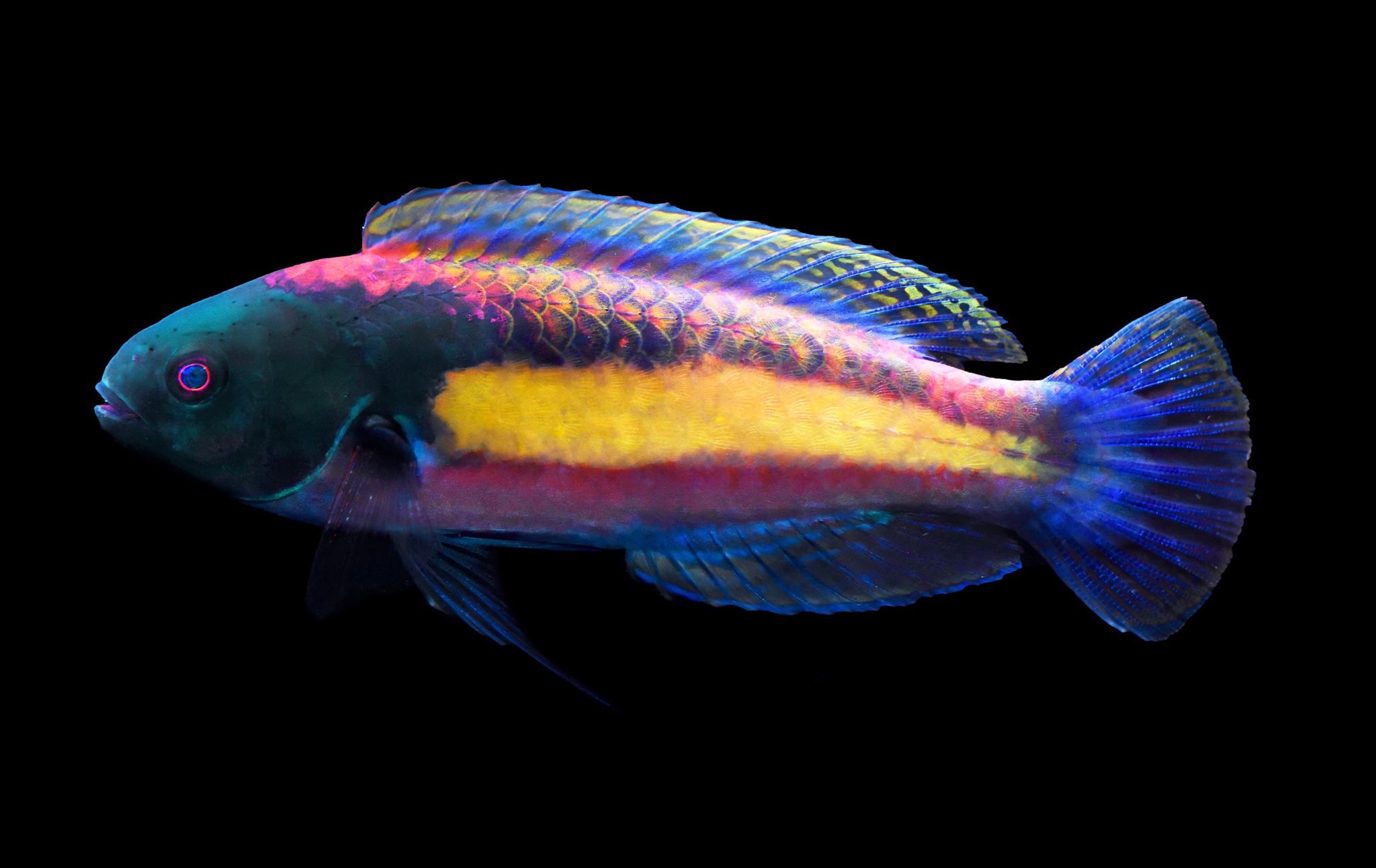









0 Comments